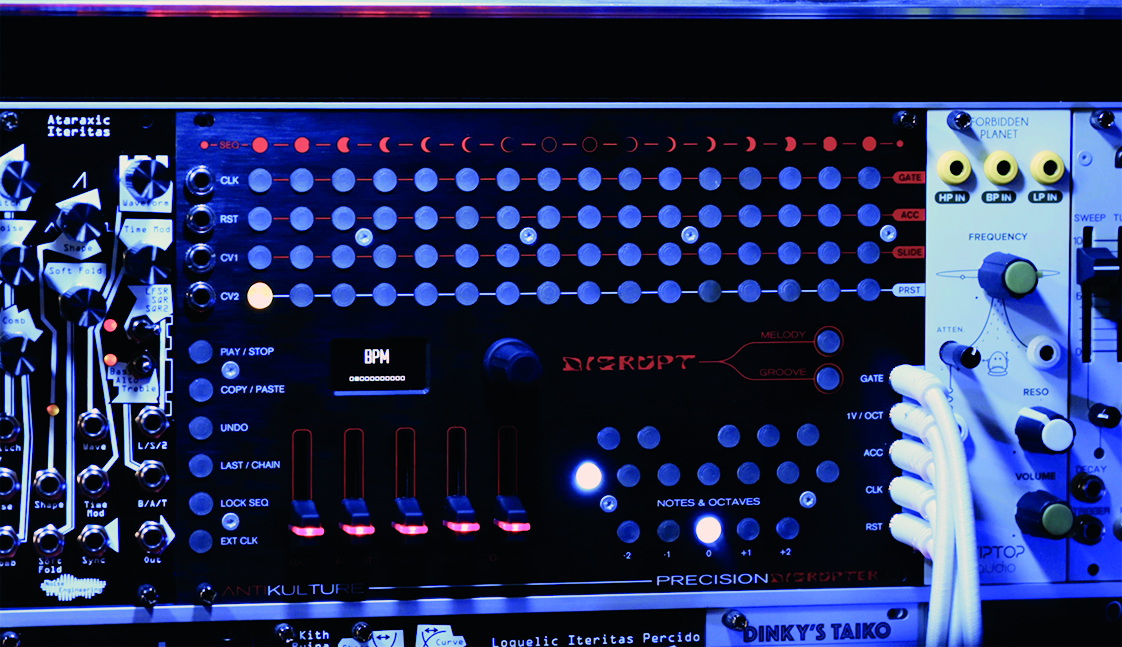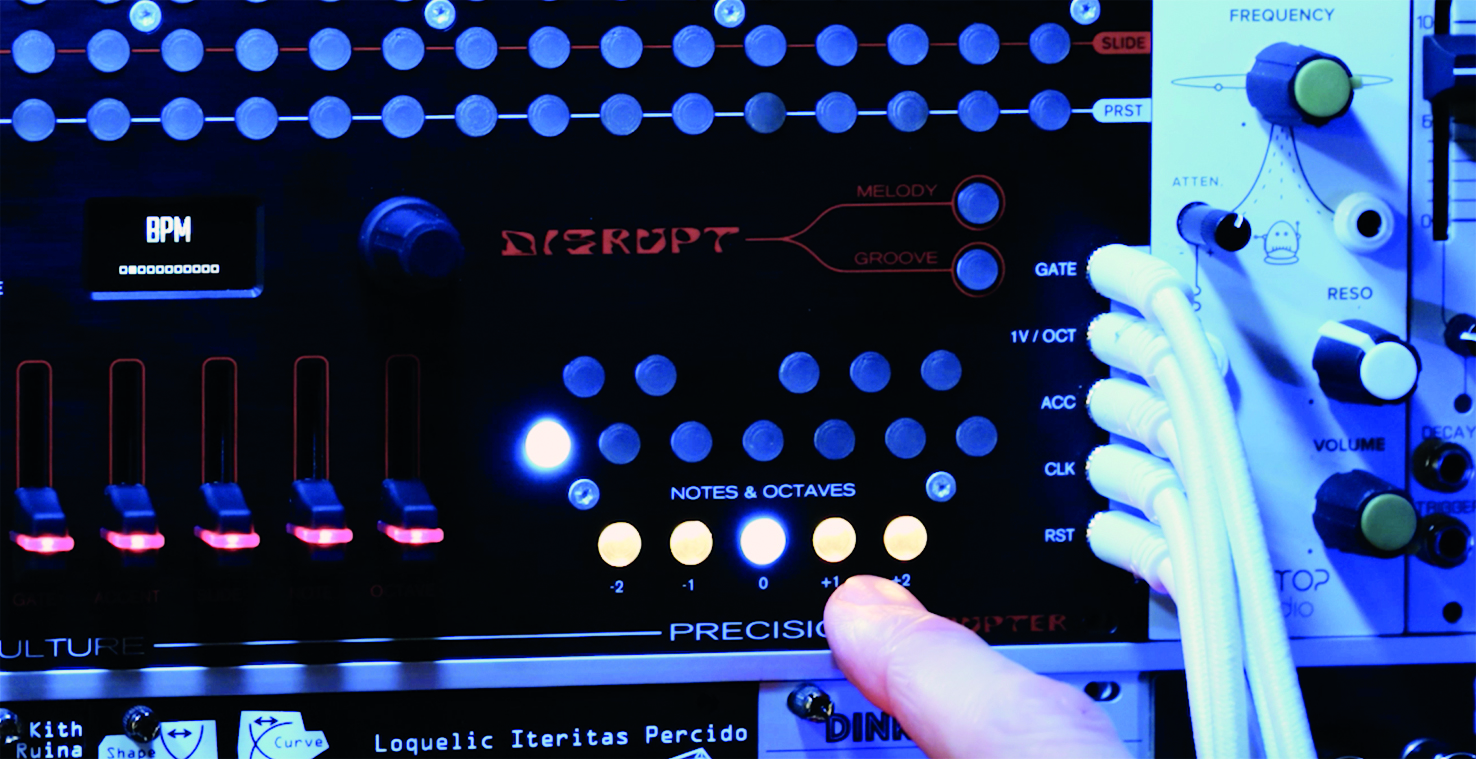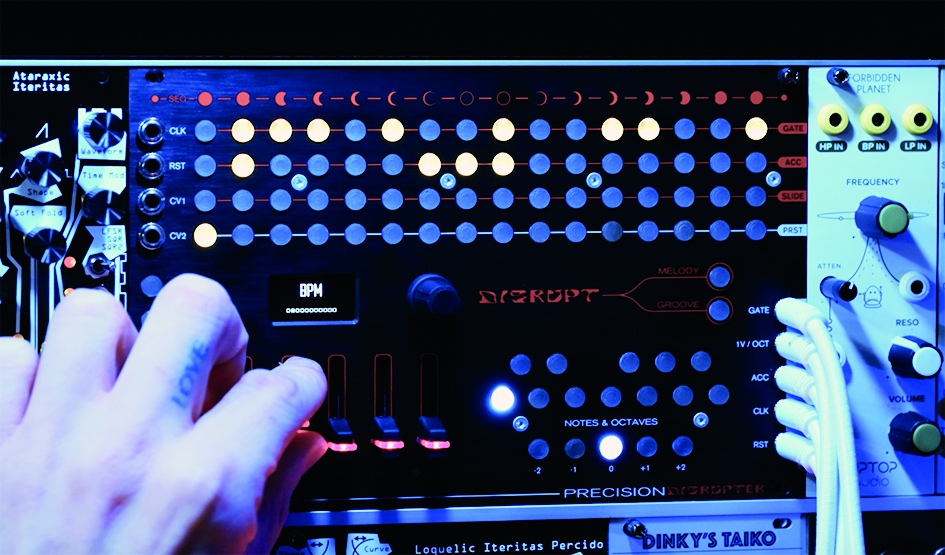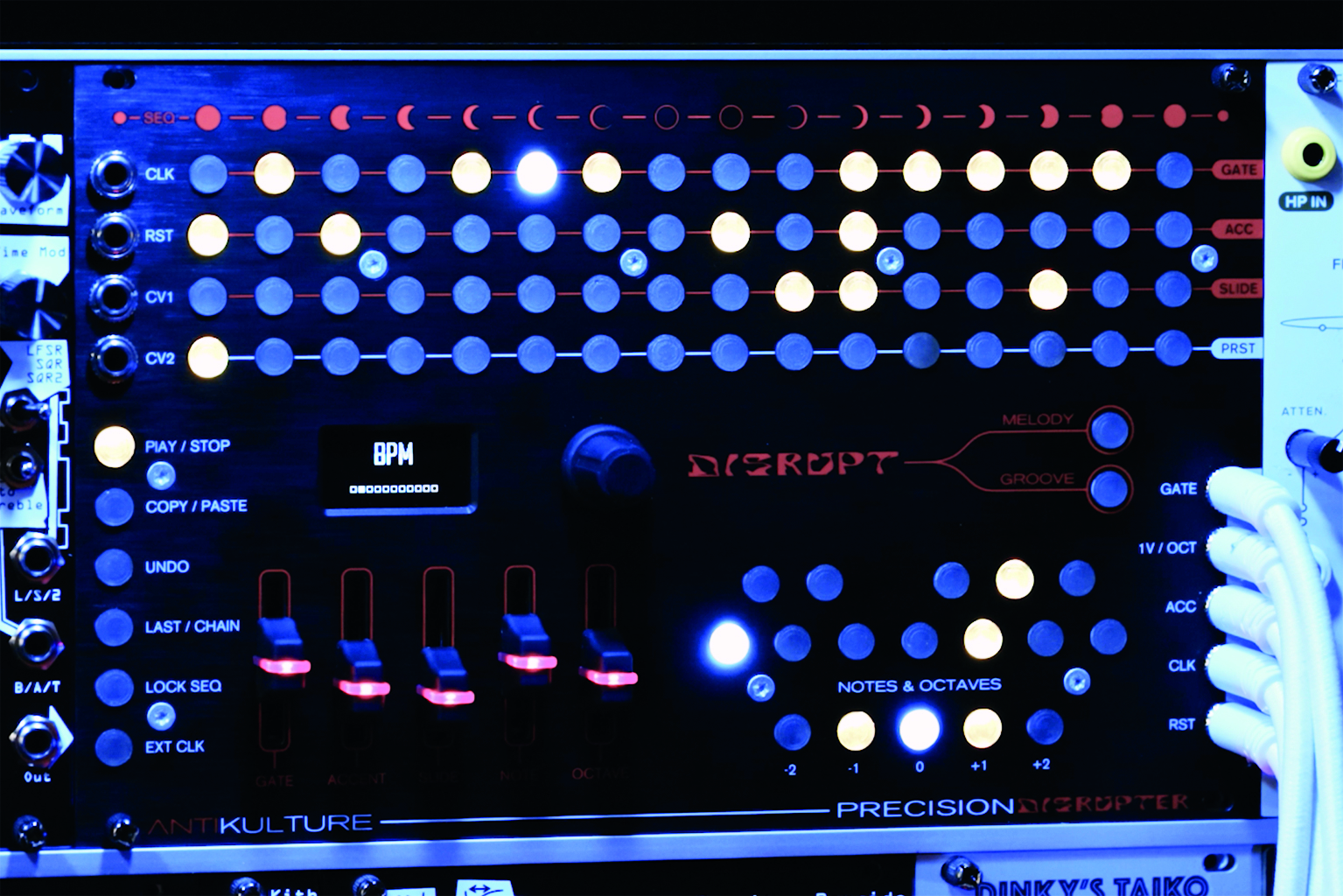The Breakdown: David Castellani shows us around his modular paradise
Get to know this LA techno visionary’s modular-and-more setup – in gloriously nitpicky detail
In our new video series The Breakdown, we shoot artists and producers in the studio showing us the gear and techniques behind some of their best tracks.
LA-based, Italian-born techno producer David Castellani is a busy man. As a producer, he spent 2021 delivering a string of EPs of rolling, club-ready techno on his own Noetic label.
Across tracks including the electro-tinged Alpha Gamma and the pulsing Electrochemical, he has defined a sound based around hard-hitting percussion and high-energy modular synth jams.
As extracurricular activities, Castellani also runs a clothing brand, After Infinite, and a newly launched modular company, Anti-Kulture, with his partner. We caught up with him to find out how he pieces together tracks and get a sneak peek of his debut module, the Precision Disruptor sequencer.
What was your first introduction to making electronic music?
“One of the most significant moments in my electronic music-making past was when I got my first piece of hardware gear, the original Elektron Analog Keys. It changed my life completely. Having the tactile experience felt like I was connecting directly to the source and I was becoming an extension of the sound.
“It was both a source of creative inspiration and technical knowledge and through it I learned most of the concepts I now take with me everyday. I’ve actually gotta say that I am pretty disappointed that Elektron didn’t update the MK2 with a keyboard version.”
Want all the hottest music and gear news, reviews, deals, features and more, direct to your inbox? Sign up here.
When did you discover modular synthesis? What drew you to it?
“I knew that there were sounds that could be obtained with modular synths that were out of reach with traditional hardware instruments, but it was only five years ago when I finally took the plunge and purchased my first set of modules.
Oscillators are usually the modules I get most excited about
“My very first buy was the Make Noise Shared System. I clearly remember looking at it and wondering how to use it. It was so beautifully constructed, yet still very foreign in many ways and it did not lend itself to instant results. Finally one night, I had an eight-hour marathon learning session on YouTube and then things really started to click.”
You mention several modular sequencers in the video, but what are your other go-to modules?
“Oscillators are usually the modules I get most excited about. And to be honest, picking one feels a lot like neglect to the others. One of my favourite pairings is the Make Noise DPO alongside the RxMx. Together, those two are an overwhelming fountain of creativity and the results are astonishing.
"You can use them all across the frequency spectrum and for so many different purposes. I just love modules that I know can deliver something new every time I patch them up, it’s always an exciting and satisfying process.
“As far as effects go, I am always looking for ways to push the sounds a bit further. I’ve recently fallen in love with the E520 by Synthesis Technology. It’s got a considerable footprint but has so much to offer and I highly recommend it to anyone wanting to bend their sound.”
What advice would you offer someone setting up their first modular system?
“One of the most important things to do when jumping into the modular world is having a proper understanding of synthesis. This will help you realise what components you will need and will help you figure out how the modules work.
“A clear understanding of the functions of utility modules, such as amplifiers and envelopes, is fundamental to building a modular system. Without them, you’ll have little success obtaining the results you want. Today, we have so much information at our fingertips and education is waiting at every corner. Don’t be afraid to dig for knowledge and look to others for guidance.”
You’ve obviously got a gear-packed studio, but are there any dream bits of gear you want to add?
“Haha, all of them. My obsession with gear goes beyond their use and functionality. I have a deep love for how they all differ from one another. Each instrument has a unique way that it works and the sweet spot where it works best. This is something I love and something I’m always looking for in a new instrument.
I tend to feel that it’s often not me making the music, it’s the instruments that create the music
“Once you find the soul of the instrument, you can easily imagine how it will fit into your music and will get the most out of its core. I tend to feel that it’s often not me making the music, it’s the instruments that create the music – I just caress them and they do the rest of the work.”
Tell us about your new live setup – how much of a challenge has it been putting that together?
“My live setup mainly consists of my modular rig and I usually don’t try hard to recreate my finished tracks back into my rig for performing. My main focus when performing live is having the freedom to be expressive and the fluidity to create a new experience every time that I perform.
“This usually means preparing the patches so I have all the tools I need at hand, but also the space to build the overall sound in any way I wish. My performance style depends on a lot of improvisation so it’s vital I have all the tools I need ready to go. A fully completed patch with all the sounds necessary for a live set can take a week to set up and I generally play around with it for a month before I feel comfortable bringing it to the stage.
“The biggest challenge I’ve had through this process is making sure I have the proper monitoring when performing. If I can’t hear what I am doing all the way to the little details, I will not be able to make the proper choices and won’t find myself in the correct headspace to perform.”
David Castellani on his generative sequencer module, the Anti-Kulture Precision Disrupter

Precision Disrupter is the debut module from David’s new Anti-Kulture brand. “It’s a generative, random-based sequencer. It’s a bit like a 303 sequencer but it has a few special features that we think are going to be really useful in the Eurorack world.”

“On the little baby keyboard you have the ability to select the notes you’d like to include in the sequence,” David explains. “Below the keyboard you also have an option to include octave ranges from 0 to +/-2.”

The sequence itself is created by adjusting a bank of five sliders. “These are for gate, accent, slides, note and octave. When you push any one of the first three up they start populating the sequencer with events.”

“The pitch sliders introduce extra notes based on what’s been selected via the mini keyboard. With the note and octave sliders, as you push those up from 0 to 100, they’ll start including anything beyond the root note and octave.”

The final touch. “You have the Melodic and Groove Disrupt buttons. What these do is independently cycle either the melodic content or the rhythmic pattern.” Pressing either button will shuffle the events around but keep parameter levels as set by the sliders.
For updates on David Castellani's latest exploits, visit his Instagram.
To find out more about the Precision Disrupter, visit Anti-Kulture's homepage.


Future Music is the number one magazine for today's producers. Packed with technique and technology we'll help you make great new music. All-access artist interviews, in-depth gear reviews, essential production tutorials and much more. Every marvellous monthly edition features reliable reviews of the latest and greatest hardware and software technology and techniques, unparalleled advice, in-depth interviews, sensational free samples and so much more to improve the experience and outcome of your music-making.
